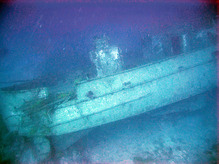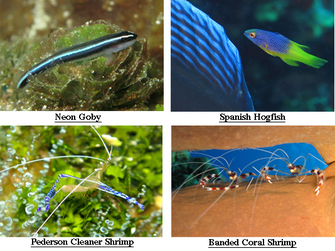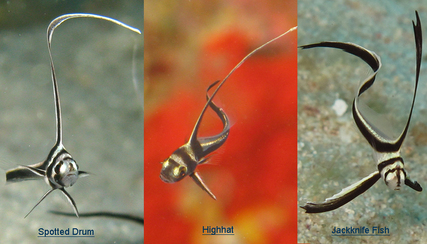 Eels have evolved a very flexible and elongated body shape that allows them access to more food sources than other fishes: animals that are hiding deep within crevices of the reef. Some can even swim under the sand. To help with this, they have no pectoral fins or lobed tails. Instead, they have a single, long, dorsal fin running the length of their bodies. As they swim, they will twist their bodies 90 degrees and undulate to move them forward. Green Moray from Caribbean Reef Life on Vimeo.  Eels are carnivores, and mostly hunt at night. They have large extended nostrils and a very keen sense of smell to help them find their food in the darkness. Green Morays have a series of backward facing teeth on the roofs of their mouths to help keep prey from escaping. Eels are beginning to hunt lionfish on their own, but now the practice of feeding lionfish to them is discouraged, as the eels are following groups of divers, and even molesting them, instead of hunting for themselves.
0 Comments
 The Josie J: This cargo ship ran the regular run between the mainland of Honduras and French Harbour, until the day mechanical failure in the ship's pumps caused it to start listing heavily to port on it's homeward journey. It was towed in, until a larger ship from French Harbour arrived, tied up alongside and tried to pump the water out of her holds. But it was coming in too fast, and was soon endangering the other ship. Sadly, they had to loose off and let it go down. It now lies in 170' of water off Roatan's western tip, near Black Rock.  The Odyssey: On November 15, 2002 the 300ft cargo ship, The Odyssey, was sunk near Mud-Hole on the island of Roatan. The ship was cleaned up and prepared for divers by widening some access points and welding closed other, more dangerous routes. It lies in 110ft of water. It is 50 ft wide and at the time of sinking, was over 80ft tall. Storms and hurricanes have battered the wreck since it went down, and marine life has begun to grow on the structure, while many fishes have found this wreck as a great new home.  A Tiger Grouper getting cleaned. A Tiger Grouper getting cleaned. Cleaning stations are areas on the reef where the usual rules of predation are suspended, and fish get together for their mutual benefit. Some species of fish, and even shrimps, have evolved to feed on the parasites that can grow on larger fishes. Often working together, these special cleaners will go to work on large carnivores like groupers. Groupers can spend up to eight hours a day getting fussed over at cleaning stations!  Symbiosis is the term used when different species get together to benefit one anonther. Each species will target different cleaning jobs. Neon gobies will feed on tiny parasites, while the tiny Pederson Cleaner Shrimp will actually jump into the mouth of a fish to clean out it's gills. Banded Coral Shrimps have larger claws and are often found cleaning out the larger bits of debris stuck between teeth. All these species and more can be found on one cleaning station, offering a full service!  Spotted Drums are on of the most iconic reef fishes in the Caribbean, and they are a favorite for underwater photographers. They always stay on the same small patch of the reef, using their elongated dorsal fins to sweep themselves back and forth continuously across their small territory. As juveniles these long dorsal fins will be even longer than their tails. They can be usually be found in groups of two, three or even more individuals. Despite their name, the spotted drum only gets it's spots late in life, starting at the tail and slowly up to the back. The dorsal fins shorten to small, pointed spines as they grow older. The Spotted Drum belongs to the Croaker family, because of the sounds they can sometimes make. Spotted Drum from Caribbean Reef Life on Vimeo.  How to tell them apart: Other members of the Croaker family, such as the Highhat and the Jackknifefish, look almost identical when they are young, and it can be difficult to tell the species apart. The easiest way is to look closely at their snouts (if they will keep still long enough to let you!) The Spotted Drum has a single black spot on it's snout. The Highhat will have a black bar running between it's eyes, and the Jackknife Fish has a black line running down it's nose. The Jackknife can also have a more yellowish tint than it's cousins. Happy hunting! |
Mickey Charteris
Is a Canadian-born South African living in Honduras, who no longer knows where his accent is from. He has been diving all over the world, but has chosen Roatan as his home because of it's incredible underwater biodiversity. He has spent many thousands of hours underwater, and he is still finding something new on every dive. Archives:
February 2014
Categories
All
|
 RSS Feed
RSS Feed